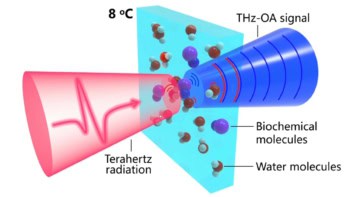Available to watch now, LAP GmbH Laser Applikationen explores patient-centric QA solutions using the RadCalcSuite
Want to learn more on this subject?
 In this webinar, we will be reviewing the results presented at AAPM of a phantom study on 1–3 cm targets volumes from SRS, lung SBRT and multi-met single isocenter treatment plans. The 3D second check results are compared with both Clarkson point dose and volumetric Collapsed Cone and Monte Carlo algorithms against Varian’s Acuros in Eclipse. The value of having an independent 3D EPID dose volume reconstruction on the planning CT using the same measurements that were used for Varian’s Portal Dosimetry computation are discussed. The study also computed the in vivo 3D EPID dose volume reconstruction against not only a chamber measurement, but back to the pre-treatment QA, second check and the TPS with a couple of clicks. The tools found in RadCalc’s single platform solution provide an automated and efficient workflow for your patient-centric treatment QA, so the entire patient journey is captured in one place.
In this webinar, we will be reviewing the results presented at AAPM of a phantom study on 1–3 cm targets volumes from SRS, lung SBRT and multi-met single isocenter treatment plans. The 3D second check results are compared with both Clarkson point dose and volumetric Collapsed Cone and Monte Carlo algorithms against Varian’s Acuros in Eclipse. The value of having an independent 3D EPID dose volume reconstruction on the planning CT using the same measurements that were used for Varian’s Portal Dosimetry computation are discussed. The study also computed the in vivo 3D EPID dose volume reconstruction against not only a chamber measurement, but back to the pre-treatment QA, second check and the TPS with a couple of clicks. The tools found in RadCalc’s single platform solution provide an automated and efficient workflow for your patient-centric treatment QA, so the entire patient journey is captured in one place.
We will also be discussing the newest innovations that are just around the corner. Learn how we will expand the current technical preview of log file 3D calculations, which will be utilized in the next version to alert you to when there has been a machine delivery issue versus a patient setup error or anatomical change within the patient. Finally, we will discuss how RadCalc’s Fast Electron Monte Carlo will be integrated seamlessly into the whole picture.
Want to learn more on this subject?

Carlos Bohorquez, MS, DABR is the product manager for RadCalc at LifeLine Software, Inc, part of the LAP Group. An experienced board-certified clinical physicist with a proven history of working in the clinic and medical device industry, Carlos’ passion for clinical quality assurance is demonstrated in the research and development of RadCalc into the future.




